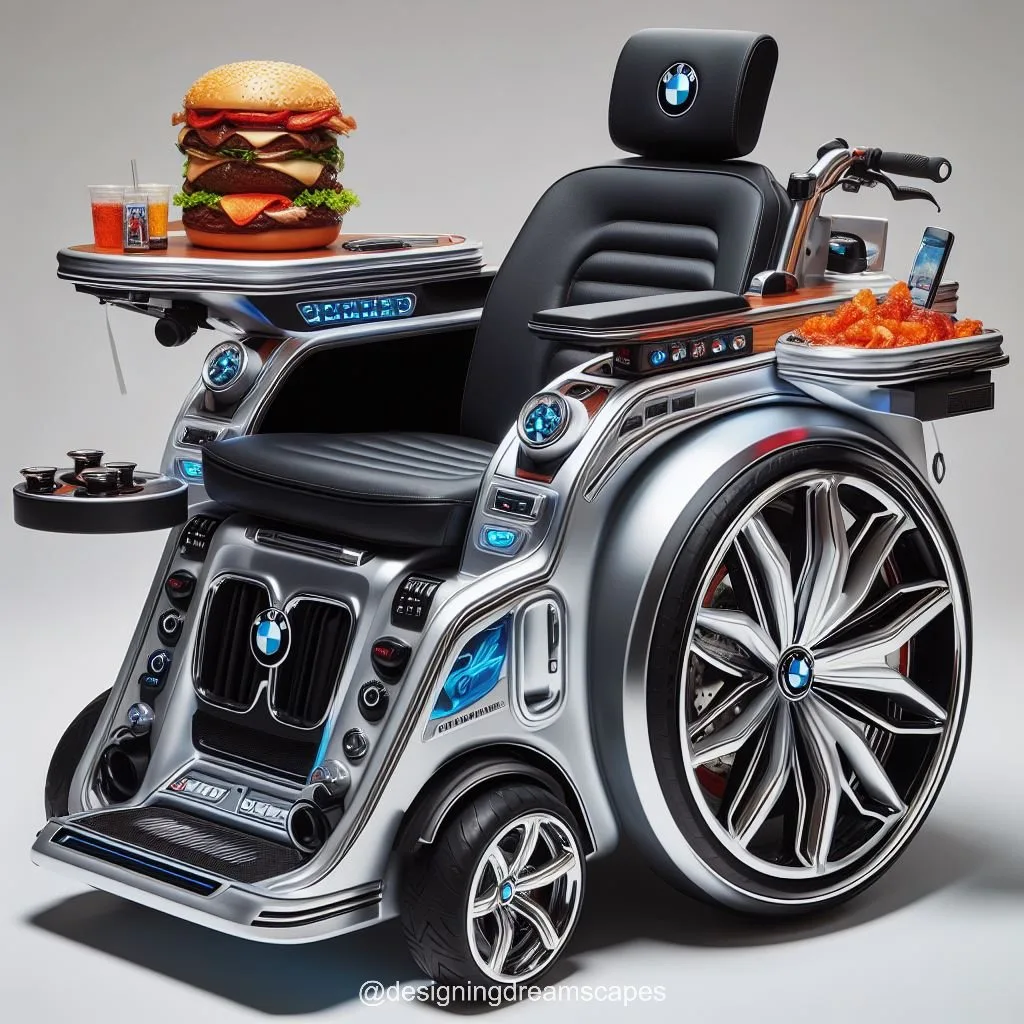As technology continues to advance, so does the accessibility options for disabled individuals. One area that has seen significant improvement is mobility. In the past, individuals with disabilities were largely dependent on walking aids or wheelchairs to get around. However, with the advancement of four-wheeled vehicles specifically designed for disabled people, there has been a significant improvement in their overall mobility and independence.
These four-wheeled vehicles are equipped with advanced features such as ramps, lifts, and specialized controls to cater to the specific needs of disabled people. They provide more than just transportation; they offer a sense of freedom, empowerment, and inclusivity for individuals with disabilities.
In this blog post, we will explore how four-wheeled vehicles for disabled people have revolutionized the concept of mobility and enhanced accessibility. We will also delve into the various types of vehicles available and the benefits they offer to disabled individuals.

Contents
Types of Four-Wheeled Vehicles for Disabled People
There are various types of four-wheeled vehicles designed for individuals with disabilities. Each type caters to different needs and offers unique features to enhance mobility. Let’s take a closer look at some of these vehicles.
1. Wheelchair-Accessible Vehicles (WAVs)
Wheelchair-accessible vehicles, also known as WAVs, are specifically designed for individuals who use wheelchairs for mobility. These vehicles have ramps, lifts, or lowered floors to allow easy access for wheelchair users. They come in various sizes, from compact cars to full-size vans, and can accommodate manual or power wheelchairs.
With WAVs, individuals in wheelchairs can easily enter, exit, and ride in the vehicle without having to transfer to a car seat. This eliminates the risk of injuries and provides a more convenient and comfortable experience for the user. Some popular models of WAVs include the Toyota Sienna, Dodge Grand Caravan, and Honda Odyssey.

2. Scooter-Accessible Vehicles
Scooter-accessible vehicles are similar to WAVs in terms of accessibility, but instead of accommodating wheelchairs, they cater to scooters. These vehicles have a lowered floor and an extended ramp to allow for easy entry and exit of a scooter. They also have tie-down systems to secure the scooter in place during transportation. Scooter-accessible vehicles are ideal for individuals who prefer using a scooter over a wheelchair for mobility.
3. Hand-Controlled Vehicles
Hand-controlled vehicles are specially designed for individuals with upper limb disabilities. These vehicles have modified controls that can be operated through hand motions, allowing individuals with limited or no lower limb functionality to drive. The most common hand controls include push-pull levers for acceleration and braking, hand-operated pedals, and steering wheel knobs.
Hand-controlled vehicles provide a sense of independence and empowerment for individuals with disabilities, as it allows them to operate a vehicle on their own. It also eliminates the need for a caregiver or driver, providing more flexibility and convenience.

4. Electric Wheelchairs/Scooter Lift Vehicles
Electric wheelchair or scooter lift vehicles are designed to transport electric wheelchairs or scooters. These vehicles have a lift attached to the back or side of the vehicle, which can be operated with a remote control. The lift can raise the electric wheelchair or scooter and secure it onto the vehicle, making it easier to transport without the need for manual lifting.
These vehicles are especially beneficial for individuals who may have difficulty transferring from their electric wheelchair or scooter to another mode of transportation. It also eliminates the need for additional equipment such as ramps or lifts, making it a more cost-effective option.

Benefits of Four-Wheeled Vehicles for Disabled People
The introduction of four-wheeled vehicles for disabled people has brought about numerous benefits, not just in terms of mobility but also in terms of physical and mental well-being. Let’s take a look at some of the key benefits these vehicles offer.
1. Independence and Freedom
One of the most significant benefits of four-wheeled vehicles for disabled people is the sense of independence and freedom it provides. With these vehicles, individuals with disabilities can go wherever they want, whenever they want, without the need for assistance. It eliminates the reliance on caregivers or family members for transportation, promoting a sense of autonomy and self-reliance.

2. Increased Mobility and Accessibility
Four-wheeled vehicles have greatly improved the mobility of individuals with disabilities. With specialized features such as ramps, lifts, and modified controls, these vehicles provide easy access and transportation for disabled individuals. They also eliminate the need for special accommodations or modifications, making it easier for disabled individuals to travel and participate in daily activities.
3. Improved Physical Health
For individuals with disabilities, regular movement and exercise can be challenging. However, with the use of four-wheeled vehicles, they can maintain a more active lifestyle. These vehicles encourage individuals to get out of their homes and engage in physical activities, promoting better physical health and reducing the risk of sedentary-related diseases.

4. Boosted Mental Well-being
Having a disability can often lead to feelings of isolation and exclusion. With four-wheeled vehicles, individuals with disabilities can participate in social activities, visit friends and family, and explore new places. This not only helps boost their mental well-being but also promotes a sense of inclusion and belonging in society.
Factors to Consider When Choosing a Four-Wheeled Vehicle
When looking for a four-wheeled vehicle for a disabled individual, there are several factors to consider to ensure the best fit. These include:
1. Accessibility Needs
First and foremost, it’s essential to consider the specific accessibility needs of the individual. Do they require a wheelchair-accessible vehicle, a scooter-accessible vehicle, or one with hand controls? Understanding the individual’s needs will help determine the most suitable vehicle.

2. Size and Space Requirements
The size and space requirements of the individual and their mobility equipment should also be considered. For example, a wheelchair-accessible vehicle needs to have enough space to accommodate the individual’s wheelchair and allow them to maneuver comfortably.
3. Budget
Four-wheeled vehicles for disabled people can vary in price depending on the type, model, and features. It’s crucial to have a budget in mind to narrow down the options and find the most cost-effective solution.
4. Safety Features
Safety should always be a top priority when choosing a vehicle. Look for features such as anti-lock brakes, airbags, and backup cameras to ensure the safety of the disabled individual.

5. Maintenance and Repair
Like any vehicle, four-wheeled vehicles for disabled people require regular maintenance and repairs. Consider the availability and cost of these services when selecting a vehicle to ensure it can be properly maintained.
Conclusion
Four-wheeled vehicles for disabled people have revolutionized mobility options for individuals with disabilities. They provide independence, enhance accessibility, and offer numerous physical and mental health benefits. As technology continues to advance, we can expect even more advanced and inclusive options for disabled individuals in the future. With these vehicles, we can create a more inclusive and accessible world for everyone, regardless of their abilities.












